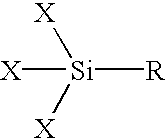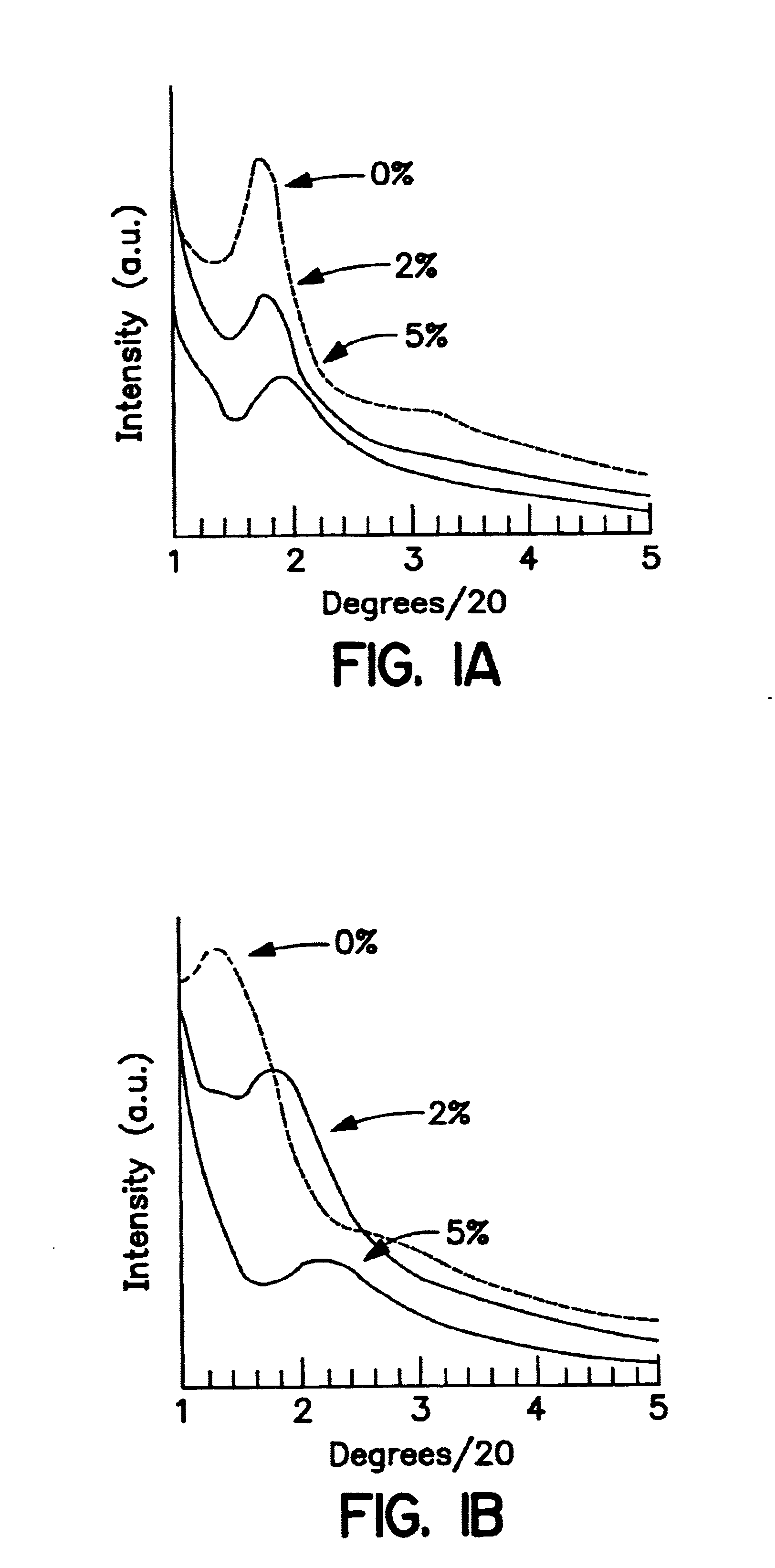Combined porous organic and inorganic oxide materials prepared by non-ionic surfactant templating route
a technology of porous organic and inorganic oxide materials, which is applied in the direction of organic compounds/hydrides/coordination complex catalysts, physical/chemical process catalysts, other chemical processes, etc., can solve the problems of limited use of macroroporous solids as adsorbents or catalysts, limited the effectiveness of catalysts, adsorbents and ion-exchange systems prepared from such materials, and difficult to synthesize or have pores. , to achieve th
- Summary
- Abstract
- Description
- Claims
- Application Information
AI Technical Summary
Benefits of technology
Problems solved by technology
Method used
Image
Examples
examples 1 and 2
The non-functionalized inorganic mesostructured silicas MSU-1 and MSU-2 were prepared according to previously published assembly techniques (Prouzet, E., et al., Angew. Chem. Int. Ed. Eng. 36, 516 (1997); U.S. Pat. No. 5,622,684), using TERGITOL 15-S-12 and TRITON-X, respectively, as structure-directing surfactants. Functionalized derivatives of MSU-1 and MSU-2 (MP-MSU-1 and MP-MSU-2) were synthesized by stirring TEOS and mercaptopropyltrimethoxysilane (MPTMS) in solutions of TERGITOL 15-S-12 (0.02 mol L.sup.-1) or TRITON-X100 (0.027 mol L.sup.-1) until a clear mixture formed. The solutions were then transferred to a thermostated water bath set at 308 K and NaF was added to catalyze the condensation of the siloxane molecules (the molar composition of each mixture was 0.1 surfactant: 1-x TEOS : x MPTMS : 0.02 NaF, where x =0, 0.02 or 0.05). After aging for 24 hours, the resulting powders were filtered, air dried and the surfactants removed from the mesostructure pores by Soxhlet extr...
example 3
Chloroalkyl functionalities have been successfully incorporated into mesostructured frameworks following the synthetic protocol described in Examples 1 and 2 as evidenced by XRD. These were prepared by stirring TEOS and chloropropyl trimethoxysilane in solutions of TERGITOL 15-S-12 (0.02 mol L.sup.-1) and TRITON-X100 (0.027 mol L.sup.-1) until a clear mixture formed.
PUM
| Property | Measurement | Unit |
|---|---|---|
| surface area | aaaaa | aaaaa |
| surface area | aaaaa | aaaaa |
| mole ratio | aaaaa | aaaaa |
Abstract
Description
Claims
Application Information
 Login to View More
Login to View More - R&D
- Intellectual Property
- Life Sciences
- Materials
- Tech Scout
- Unparalleled Data Quality
- Higher Quality Content
- 60% Fewer Hallucinations
Browse by: Latest US Patents, China's latest patents, Technical Efficacy Thesaurus, Application Domain, Technology Topic, Popular Technical Reports.
© 2025 PatSnap. All rights reserved.Legal|Privacy policy|Modern Slavery Act Transparency Statement|Sitemap|About US| Contact US: help@patsnap.com



